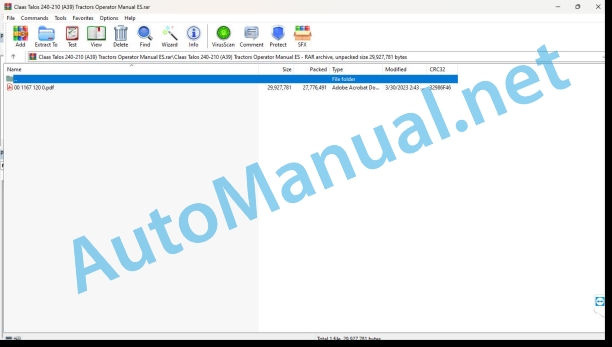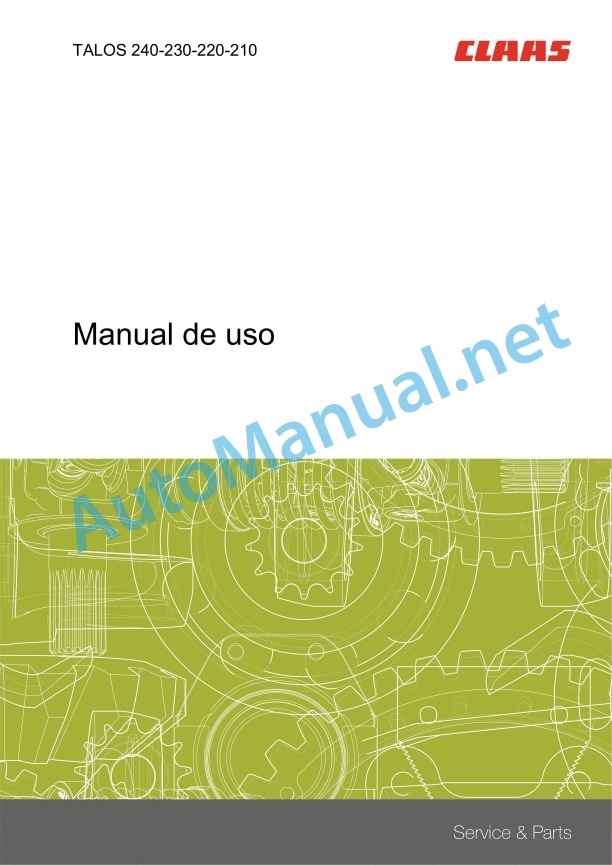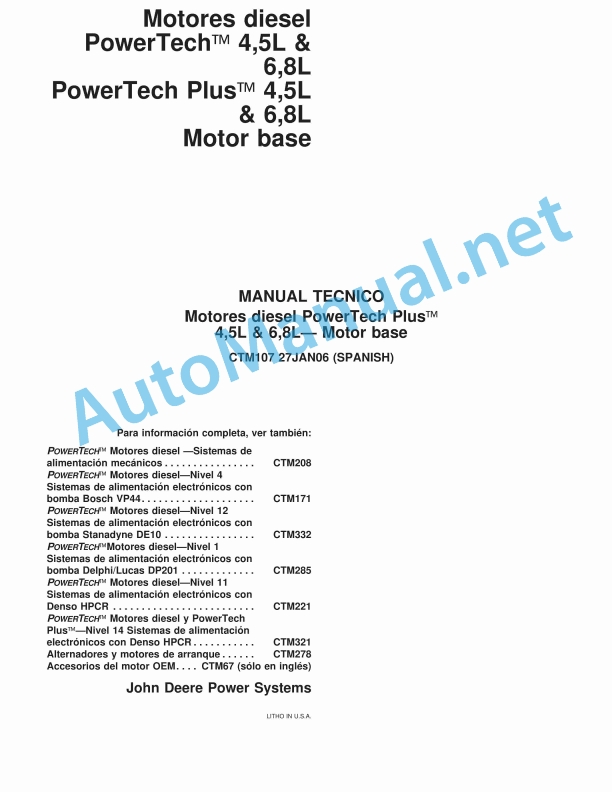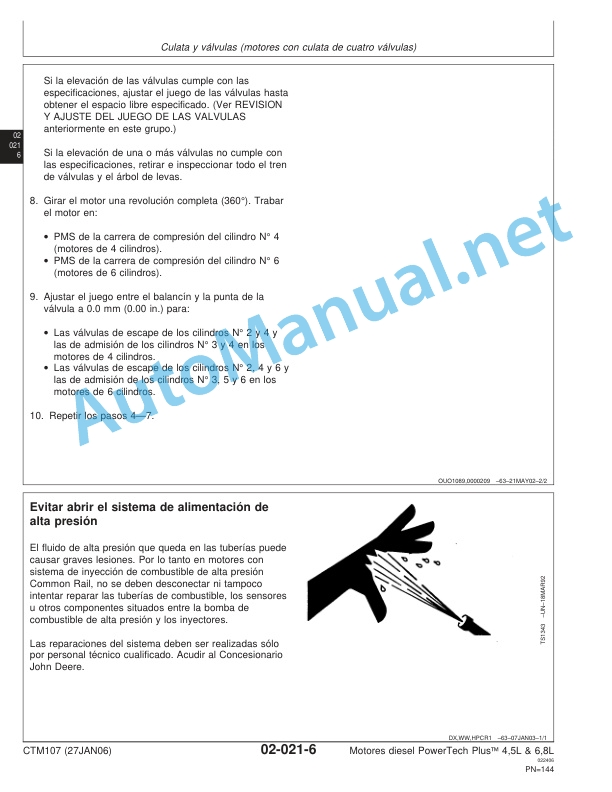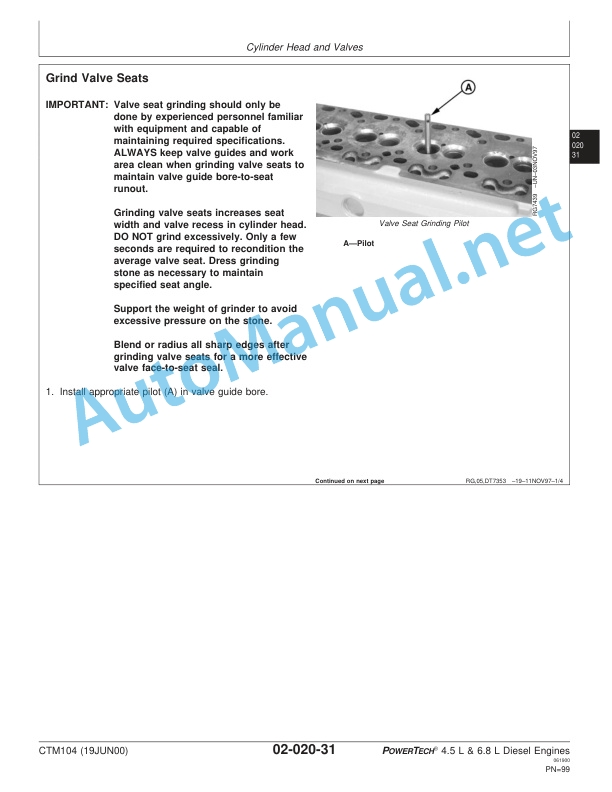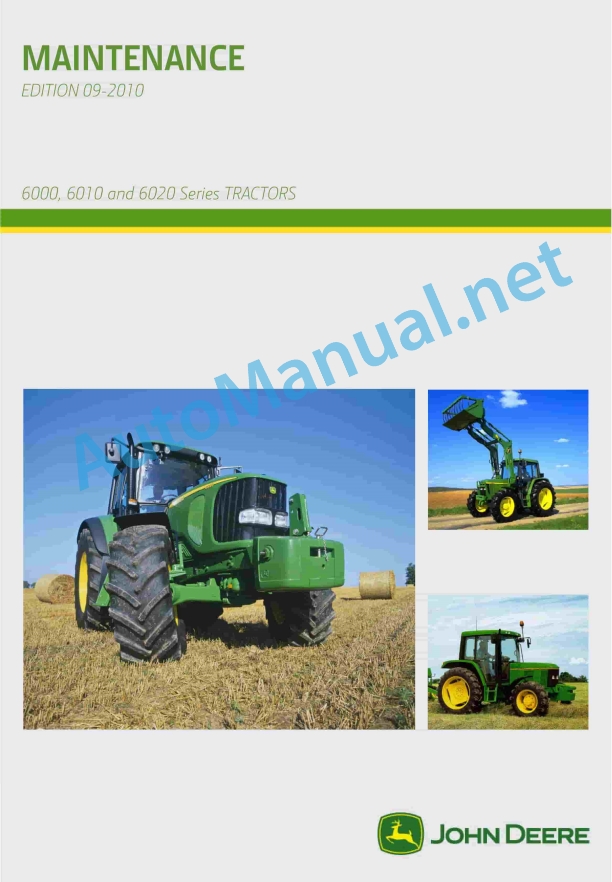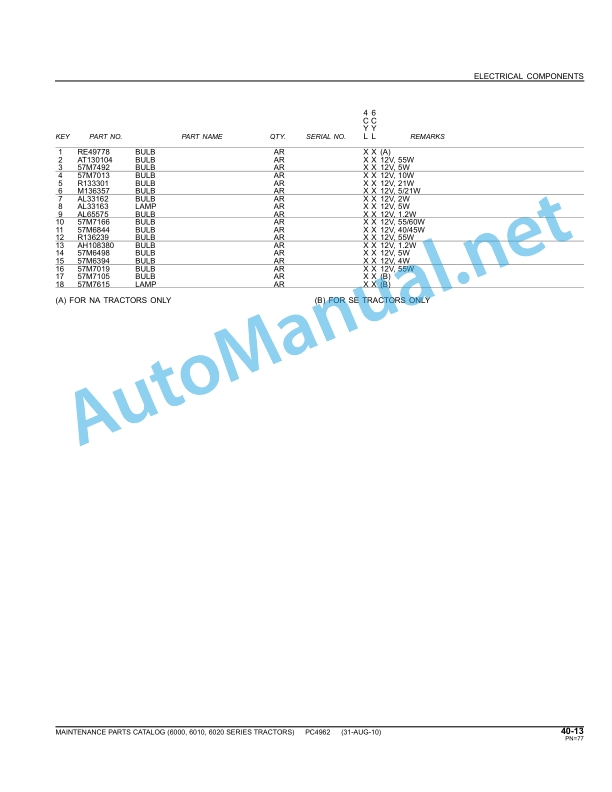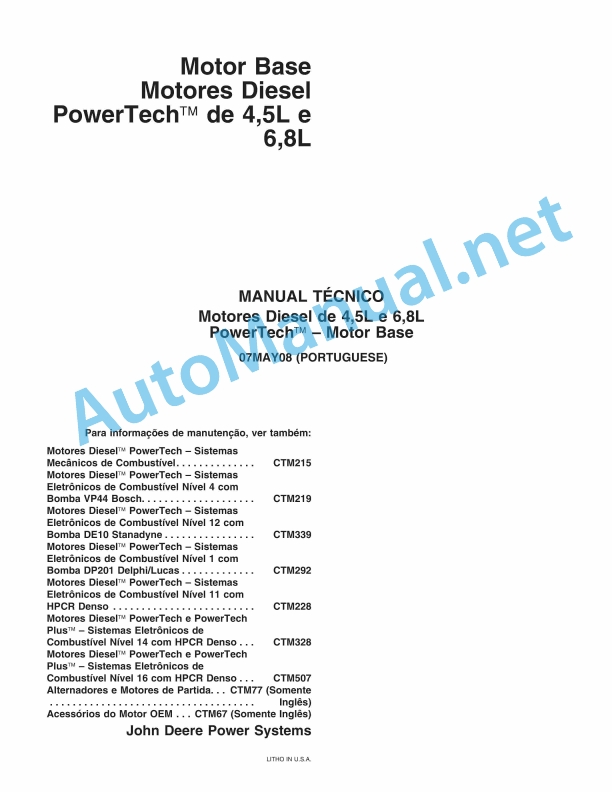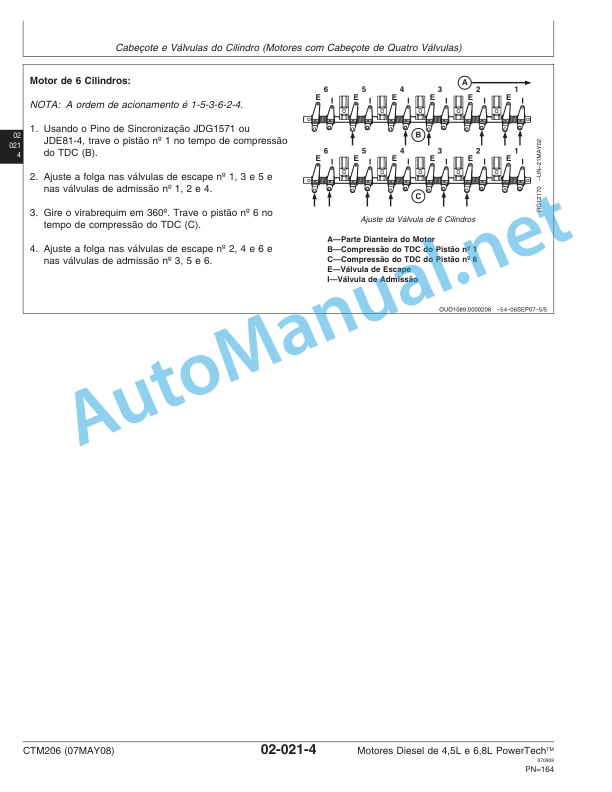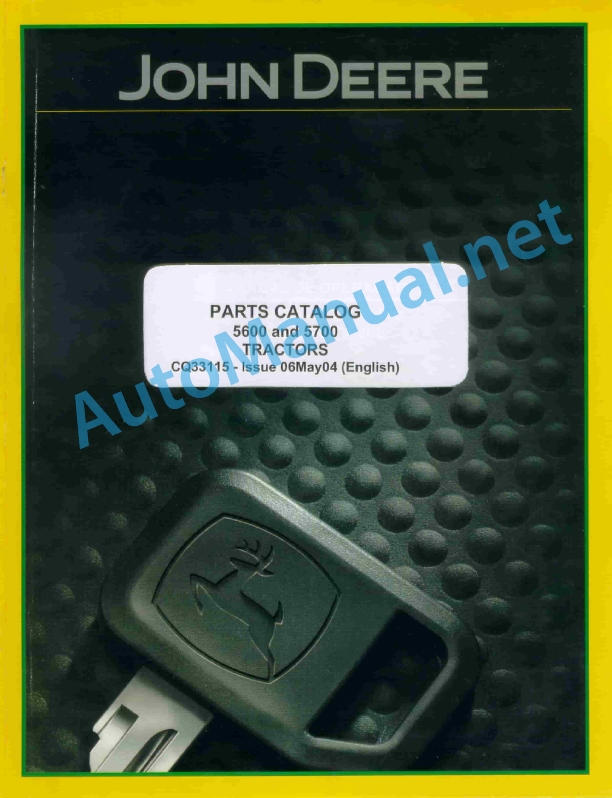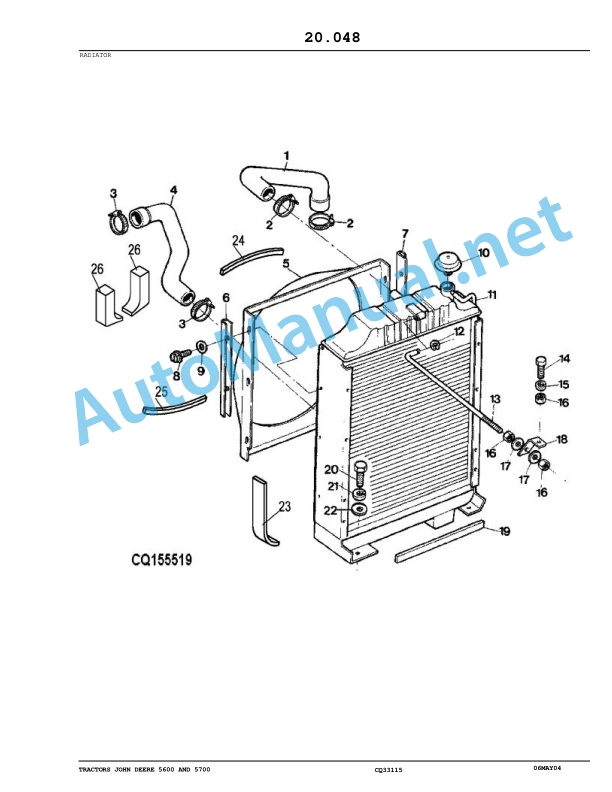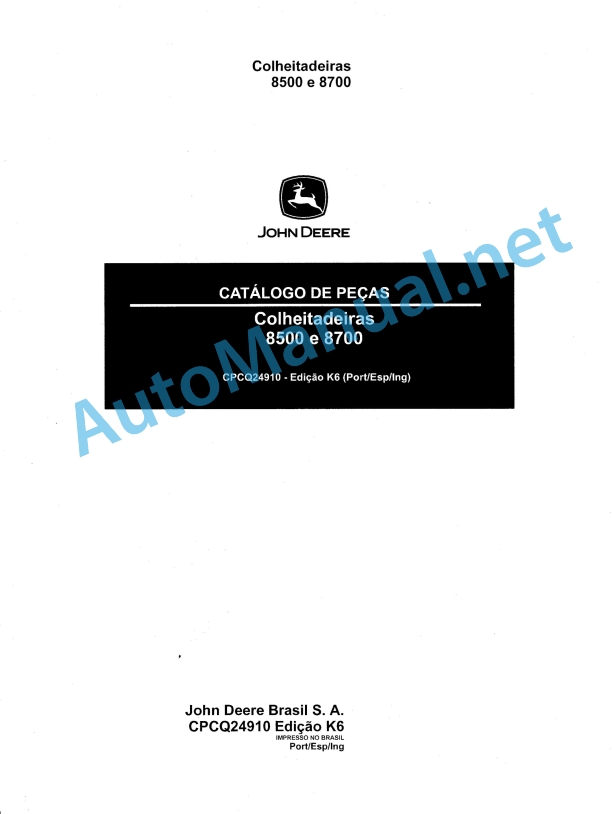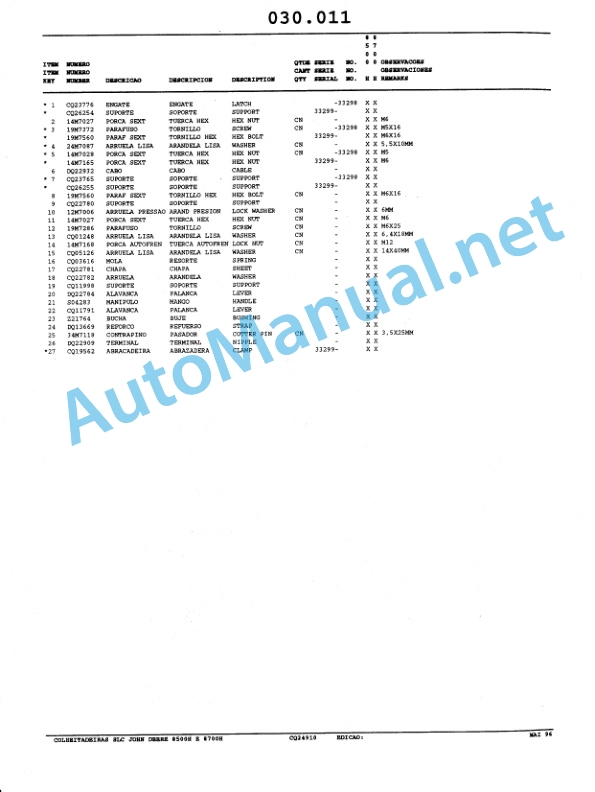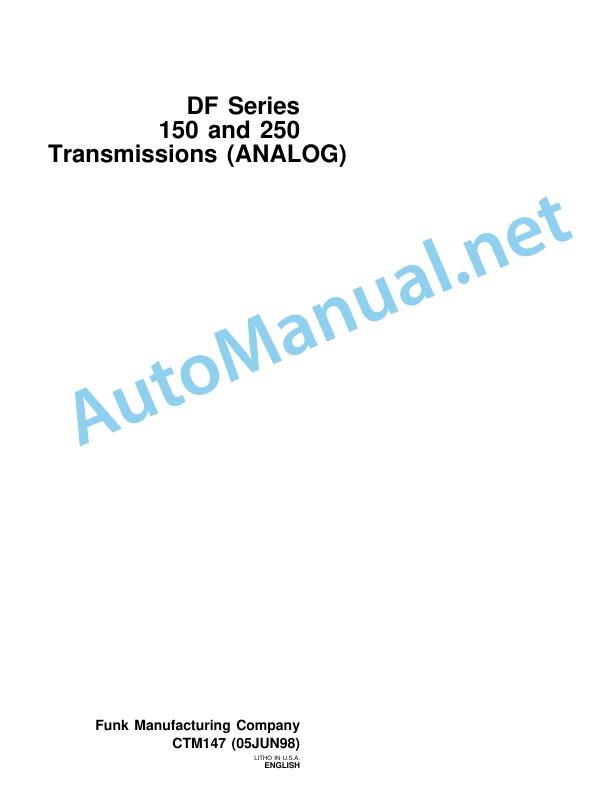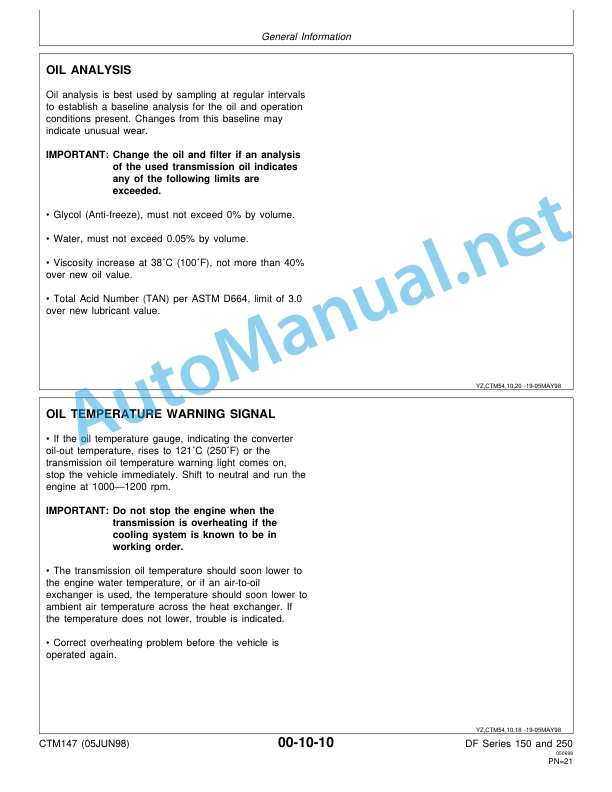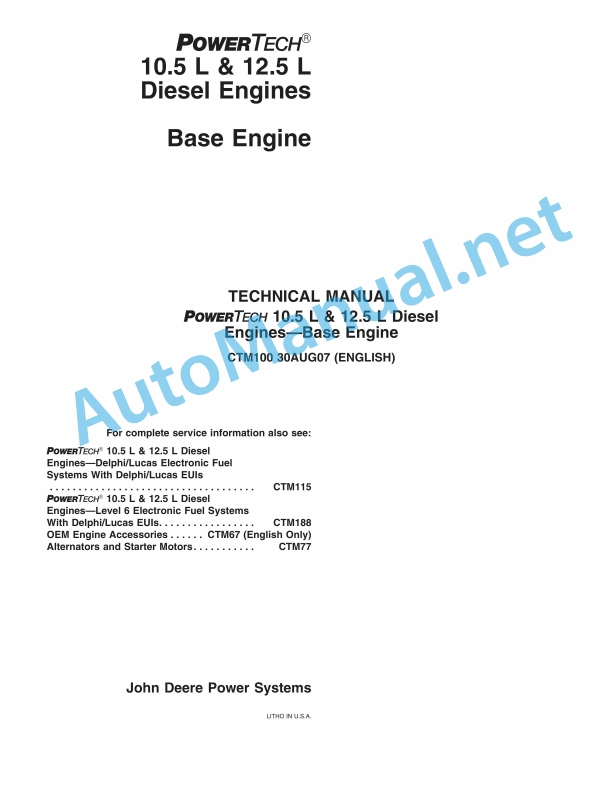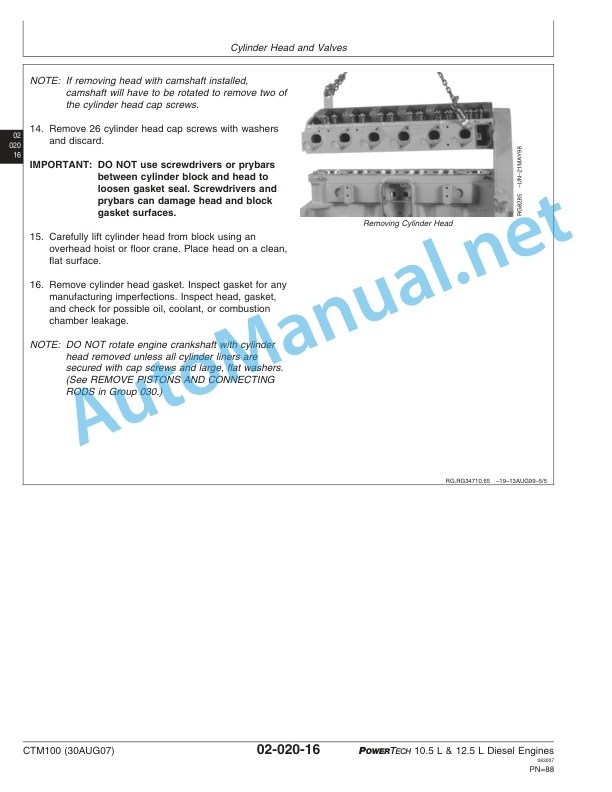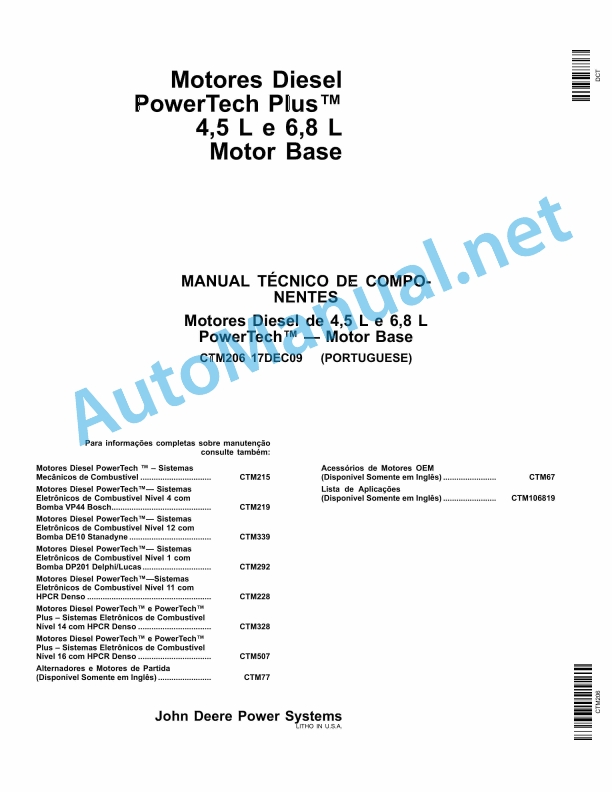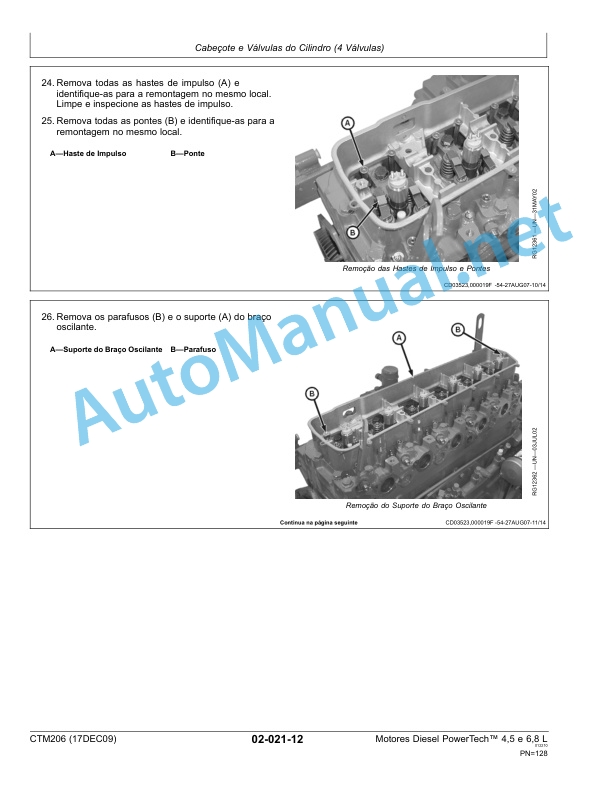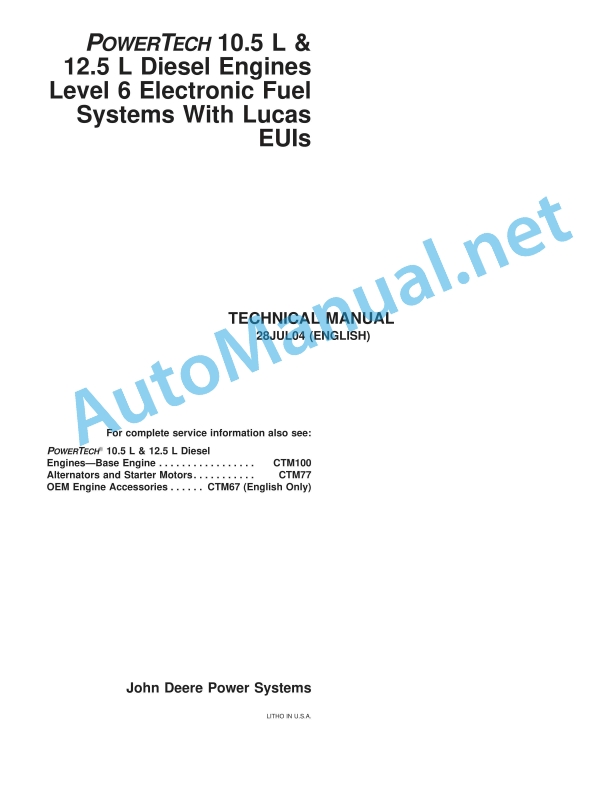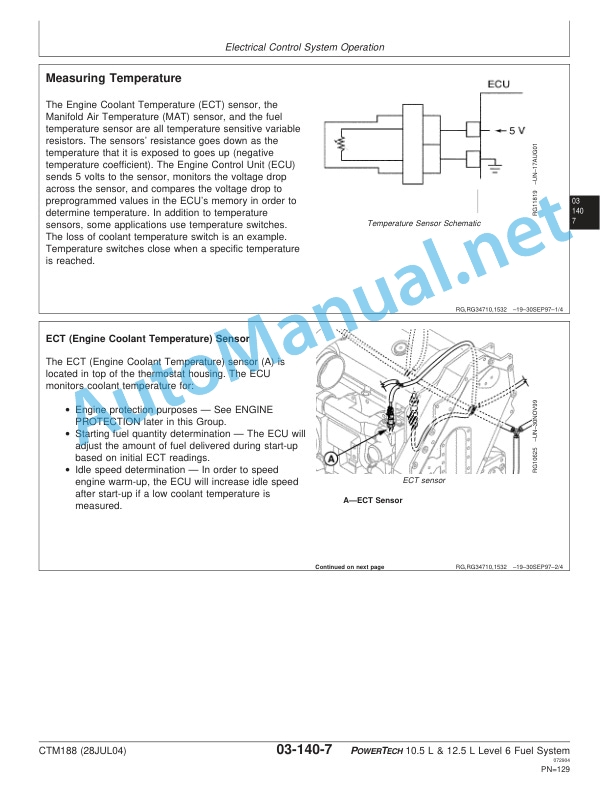Claas Talos 240-210 (A39) Tractors Operator Manual ES
$50.00
- Model: Talos 240-210 (A39) Tractors
- Type Of Manual: Operator Manual
- Language: ES
- Format: PDF(s)
- Size: 26.5 MB
File List:
00 1167 120 0.pdf
00 1167 120 0.pdf:
TALOS 240-230-220-210
1 Regarding this instruction manual
1.1 Information regarding the instruction manual
1.1.1 Use the user manual
Important information about this user manual
Structuring according to tractor subassemblies
Search and find
Direction signs
Specific terminology
Optional equipment and supplementary equipment
1.1.2 Symbols and instructions
Texts and illustrations
Indication of dangers and warnings
1.1.3 Validity of the user manual
1.1.4 Technical instructions
2 Security
2.1 Safety instructions
2.1.1 Use according to assignment
2.1.2 Use not in accordance with assignment
2.1.3 Safety and accident prevention instructions
2.1.4 Tractor driving
2.1.5 Checking the condition of the tractor
2.1.6 Getting on/off the tractor
Climb aboard the tractor
Get off the tractor
2.1.7 Passengers
2.1.8 Cabin
Cabin safety structure
Polluted environment
2.1.9 Necessary precautions before start-up
2.1.10 Adjustment and maintenance work
Particularities of placing the tractor on lifting supports
2.1.11 Tool attachment
2.1.12 Using the front/rear power take-off
2.1.13 Fuel
2.1.14 Engine coolant
2.1.15 Air conditioning
2.1.16 Electrical system
2.1.17 Electromagnetic Compatibility (EMC)
2.1.18 Applications with front loaders
2.1.19 Forestry applications
2.1.20 Work in fixed position
2.1.21 Tools that work at great depth
2.2 Safety marking on the tractor
2.2.1 General advice regarding safety markings
2.2.2 Warning symbols
2.3 Safety devices
2.3.1 Hood
2.3.2 Fins
2.3.3 PTO lock and protective sleeve
3 Description of the tractor
3.1 Summary
3.1.1 Description
Cabin version
Platform version
3.2 Identification plates and vehicle identification number
3.2.1 Nameplates
Tractor nameplate
Engine nameplate
“Carraro” front axle nameplate
4 Control and display instruments
4.1 Cabin and driving position
4.1.1 Control and indicator symbols
4.1.2 Dashboard
Left side
Right side
4.1.3 Left side terminal and controls on the seat support
4.1.4 Right side terminal
4.1.5 Cabin pillar
Right side
4.1.6 Multifunction armrest (electrohydraulic control lift, depending on equipment)
4.1.7 Instrument panel
4.1.8 Ventilation and air conditioning
4.1.9 Control lever for signal lights and acoustic warning
Signal lights on/off
High beam on/off
Turn signal control
Acoustic warning
4.1.10 Work light controls
Cabin version
Platform version
4.1.11 Rotating flashing light (option)
4.1.12 Emergency lights control
4.1.13 Windshield wipers/washers (cab version)
4.1.14 Electrical socket (cab version)
4.2 Electrical and electronic system
4.2.1 External rear linkage controls
4.2.2 Trailer electrico (option)
5 Technical data
5.1 TALOS 240 – 210
5.1.1 Dimensions
TALOS 210 and TALOS 220
TALOS 230
TALOS 240
5.1.2 Weight
5.1.3 Engine
5.1.4 Transmission
5.1.5 Travel speeds
5.1.6 Front axle
5.1.7 Rear axle
5.1.8 Address
5.1.9 Elevator
5.1.10 Hooks
5.1.11 Maximum allowable towable masses
5.1.12 Load capacities
5.1.13 PTO
5.1.14 Hydraulic system
5.1.15 Electrical system
Trailer electrical outlet wiring
CE version
ASAE version
5.1.16 Cabin
Seat vibration level
5.1.17 Air conditioning
5.1.18 Lubricants/Hydraulic Oils
Use of engine oil
5.1.19 Engine coolant
5.1.20 Air conditioning cooling agent
6 Prepare the tractor
6.1 Engine
6.1.1 Fuel
Quality requirement
Use of “extreme cold” type fuel
Fuel storage
Precautions necessary for handling fuel
6.1.2 Filling the fuel tank
6.1.3 Checks prior to starting the engine
6.2 Framework
6.2ront ks
Front tire and disc configurations
Adjusting the turning stops
6.2.2 Rear routes
Rear tire and disc configurations
Game control
6.2.3 Tires
6.2.4 Tire load capacity and inflation pressure
6.3 Brake
6.3.1 Brake pedal engagement
6.4 Address
6.4.1 Steering column
6.5 Rear linkage
6.5.1 Lifting supports
6.5.2 Upper connecting rod
6.5.3 Hitching and unhitching an implement
recommendations
Hitching an implement
Transport
Storing the three-point hitch
6.6 Front loader
6.6.1 Front loader attachment points
6.6.2 Hydraulic distributors
6.7 Rear PTO
6.7.1 PTO connection
6.8 Towing device
6.8.1 Types of coupling
recommendations
hitch fork
Oscillating bar with clamp
6.9 Cabin and driving position
6.9.1 Folding Safety Bow (ROPS)
6.9.2 Seat adjustment
6.9.3 Seat belt
6.9.4 Checks prior to commissioning
6.9.5 Clock setting
6.10 Assembly and body parts
6.10.1 Opening and closing the hood
6.10.2 Balancing the tractor with mounted implements
Summary table
6.10.3 Assembly and disassembly of the front masses
6.10.4 Rear wheel weights
45kg wheel weights
6.11 Transport of the tractor
6.11.1 Transport
7 Management
7.1 Engine
7.1.1 Recommendations for use
7.1.2 Turbocharger recommendations
7.1.3 Engine starting
Preliminary operations
To start the engine
Starting in cold temperatures
7.1.4 Accelerator pedal
7.1.5 Hand throttle
7.1.6 Engine stop
7.2 Transmission, clutch and cardan shaft
7.2.1 Transmission without Power Shuttle System
Selecting the direction of movement
Gear shift lever
Range lever
7.2.2 Transmission with Power Shuttle System
Selecting the direction of travel
Gear lever
Speed selection
Range lever
Activation mode selection contactor
7.2.3 Tortoise gait (depending on equipment) 7.2.4 Log the differentials
7.3 Chassis
7.3.1 Front axle activation
7.4 Brake
7.4.1 Service brakes
brake pedals
7.4.2 Handbrake
7.4.3 Tractor immobilization
7.5 Rear linkage
7.5.1 Mechanical control elevator
Position control
Effort control
Mixed control
Descent speed
Elevator automation
7.5.2 Electrohydraulic control elevator
Rear linkage release
Work mode selection
Position control
Bottom stop adjustment button
Effort control
Furrow depth control
Top stop adjustment button
Up/down contactor
Descent speed
Elevator automation
External controls
7.6 Front loader
7.6.1 Front loader controls
7.7 Rear PTO
7.7.1 PTO speed selection
PTO speed selection lever
PTO lever proportional to travel speed
7.7.2 Use of the control in the cabin
7.8 Rear hydraulic system
7.8.1 Association of the controls with the rear pressure taps
7.9 Cabin and driving position
7.9.1 Air conditioning and heating (cab version)
Controls
Start-up of air conditioning
Increased air pressure in the cabin
Ventilated air flow adjustment
Cabin air filters
7.9.2 Interior lighting (cab version)
7.9.3 Audio equipment (cab version)
8 Incident and solution
8.1 Alarms
8.1.1 Alarms
8.2 Engine
8.2.1 Starting with an external battery
8.2.2 Draining water from the fuel filter
8.3 Chassis
8.3.1 Jack placement
8.3.2 Unclogging the tractor
Unclogging a tractor by towing
8.3.3 Tractor trailer
8.4 Address
8.4.1 Address
8.5 Electrical and electronic system
8.5.1 Fuses and relays
Main fuse
Check and replacement of fuses
Frame fuse box
Cabin fuse box (cab version)
8.5.2 Battery check
8.5.3 Battery connection and disconnection
8.5.4 Battery charging
9 Maintenance
9.1 Maintenance instructions
9.1.1 Personal protective equipment
9.1.2 Stopping and securing the tractor
9.1.3 Clean and organize risk areas
9.1.4 Welding instructions
9.1.5 Protection devices on the tractor
9.1.6 Engine
Alternator
Engine lubrication
engine cooling
engine belts
9.1.7 Wheels and tires
9.1.8 Braking system
9.1.9 Address
9.1.10 Power take-off driven tools
9.1.11 Air conditioning
9.1.12 Hydraulic circuit
9.1.13 Electrical system
9.1.14 Energy accumulators
9.1.15 Spare parts
9.1.16 Cleaning and protection
9.1.17 Work at height
9.1.18 Handling of heavy parts
9.1.19 Maintenance operations under the cabin
9.1.20 Lifting the front of the tractor
9.2 Greasing scheme
9.2.1 Grease points – 50 h
«Taesan Machinery» front bridge
“Carraro” front axle
9.3 Summary of maintenance intervals
9.3.1 Location of parts
9.3.2 Every day
9.3.3 First 50 hours
9.3.4 First 300 hours
9.3.5 Every 50 hours
9.3.6 Every 300 hours
9.3.7 Every 600 hours
9.3.8 Semi-annually
9 Annually
10 Every 1200 hours
9.4 Engine maintenance operations
9.4.1 Cleaning the radiator and grille
9.4.2 Cleaning the engine air filter
9.4.3 Changing the engine air filter
9.4.4 Checking the engine oil level
9.4.5 Changing the engine oil
9.4.6 Changing the engine oil filter
9.4.7 Changing the fuel filter
9.4.8 Bleeding air from the fuel circuit
9.4.9 Checking the coolant level
9.4.10 Changing the coolant
Coolant quality
9.4.11 Checking valve clearance
9.4.12 Checking the fan belt tension
9.4.13 Checking the injection pressure
9.4.14 Cleaning the condenser and radiator grille
9.4.15 Checking accessory belt tension
9.5 Gear maintenance operations
9.5.1 Clutch pedal clearance adjustment
9.5.2 Bleeding air from the clutch circuit
9.6 Chassis maintenance work
9.6.1 Checking the front axle oil level «Taesan Machinery»
9.6.2 Checking the oil level of the «Carraro» front axle differential box
9.6.3 Checking til level of the fineductions of the «Carraro» front axle
9.6.4 Changing the front axle oil «Taesan Machinery»
9.6.5 Changing the oil in the “Carraro” front axle differential casing
9.6.6 Changing the front axle final reduction oil
9.6.7 Checking the parallelism of the front axle
9.6.8 Checking tire inflation pressure
9.6.9 Lost or loose items
9.6.10 Checking the tightness of the fixation of the wheel discs to the hubs
9.6.11 Checking the tightness of the fixation of the wheel discs to the rims
9.7 Brake maintenance operations
9.7.1 Brake pedal clearance adjustment
9.7.2 Checking the brake fluid level
9.7.3 Bleeding air from the braking circuit
9.8 Hydraulic installation maintenance work
9.8.1 Check the hydraulic circuit.
9.8.2 Checking the hydraulic/transmission oil level
9.8.3 Hydraulic/transmission oil change
9.8.4 Changing the hydraulic oil filter
9.8.5 Changing the “Power Shuttle System” oil filter (depending on equipment)rical/electronic instalenance work
9.9.1 Checking the electrical system
9.9.2 Checking the air conditioning controls
9.10 Cabin/driving position maintenance operations
9.10.1 Cleaning the cabin air filter
9.10.2 Changing the cabin air filter
9.10.3 Checking the air conditioning leaks
9.10.4 Checking the air conditioning compressor
9.11 Parking
9.11.1 Parking instructions
10 Decommissioning and waste disposal
10.1 Information about the machine
10.1.1 Disposal and waste disposal
11 Technical dictionary and abbreviations
11.1 Technical dictionary and abbreviations
11.1.1 Technical terms and abbreviations
11.1.2 Units of measurement and abbreviations
John Deere Repair Technical Manual PDF
John Deere Repair Technical Manual PDF
John Deere Repair Technical Manual PDF
John Deere Diesel Engines PowerTech 4.5L and 6.8L – Motor Base Technical Manual 07MAY08 Portuguese
John Deere Parts Catalog PDF
John Deere Harvesters 8500 and 8700 Parts Catalog CPCQ24910 Spanish
John Deere Repair Technical Manual PDF
John Deere DF Series 150 and 250 Transmissions (ANALOG) Component Technical Manual CTM147 05JUN98
John Deere Repair Technical Manual PDF
John Deere Repair Technical Manual PDF
John Deere Repair Technical Manual PDF

